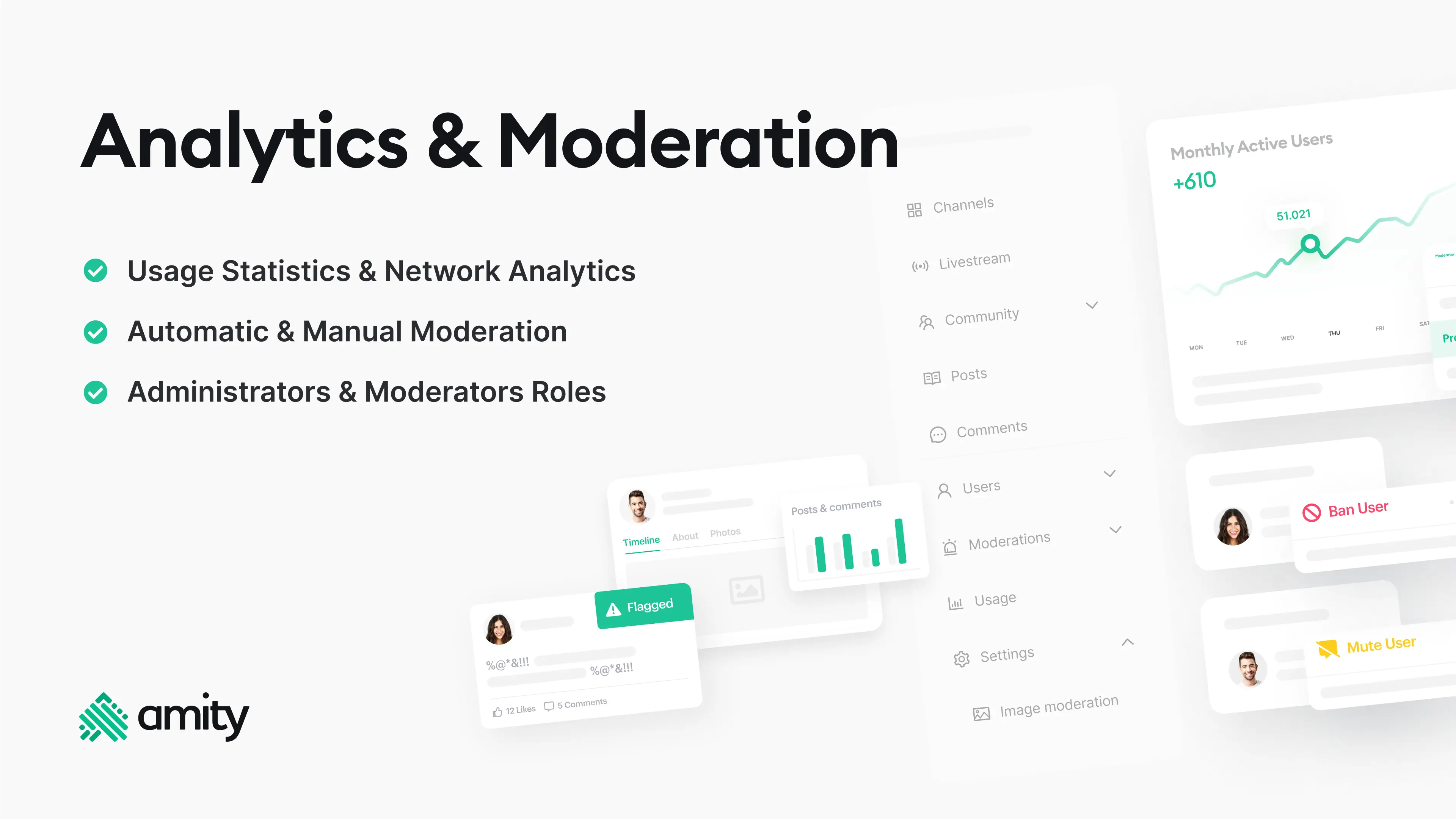Nowadays, creating a safe and engaging community within your social app is of utmost importance. One way to ensure this is by implementing a user flagging feature. This feature allows administrators and moderators to monitor and manage inappropriate behaviour within a chat channel effectively. In this tutorial, we will guide you on how to add a user flagging feature to your iOS social app using the Amity Social Cloud SDK.
Pre-requisites:
Before we begin, make sure you have the following:
- The Amity Social Cloud SDK installed in your iOS project.
- A valid instance of `AmityUserRepository` and `AmityUserFlagger`.
- The user ID of the user you want to flag or unflag.
Initialization and Authentication:
Before you can start flagging or unflagging users, you need to initialize and authenticate your Amity client. Here’s how you can do it:
To authenticate your client, you need to call the `login(…)` method with the current user. Here’s how you can do it:
Use Cases for the Flag/Unflag User Feature
The flag/unflag user feature can be used in various scenarios to maintain a safe and engaging community. Here are a few examples:
- Content Moderation: If a user posts inappropriate content, other users can flag them. The flagged user can then be reviewed by the administrators or moderators.
- User Reporting: Users can flag other users who are behaving inappropriately or violating the community guidelines. This helps in maintaining a respectful environment.
- User Management: Administrators can use the flag/unflag feature to manage users effectively. They can unflag users who were flagged mistakenly or have improved their behaviour.
Step 1: Create an Instance of AmityUserRepository
First, you need to create an instance of `AmityUserRepository`. This repository is responsible for all user-related operations.
Step 2: Get the User Object
Next, get the user object for the user you want to flag. You can do this by calling the `user(forId:)` method on the `userRepository` instance.
Step 3: Validate the User Object
Before proceeding, ensure that the user object is valid.
Step 4: Create an Instance of AmityUserFlagger
Now, create an instance of `AmityUserFlagger`. This instance will be used to flag and unflag the user.
Step 5: Flag a User
To flag a user, call the `flagUser(withId:)` method on the `userRepository` instance.
Step 6: Unflag a User
Similarly, to unflag a user, call the `unflagUser(withId:)` method on the `userRepository` instance.
Step 7: Check if a User has been Flagged
Finally, to check if a user has been flagged by the current user, call the `isUserFlaggedByMe(withId:)` method on the `userRepository` instance.
Final Thoughts
By following these steps, you can easily add a user flagging feature to your iOS social app using the Amity Social Cloud SDK. This feature not only helps in maintaining a safe and engaging community but also enhances the overall user experience. Remember, a safe and respectful environment is key to the success of any social app.



